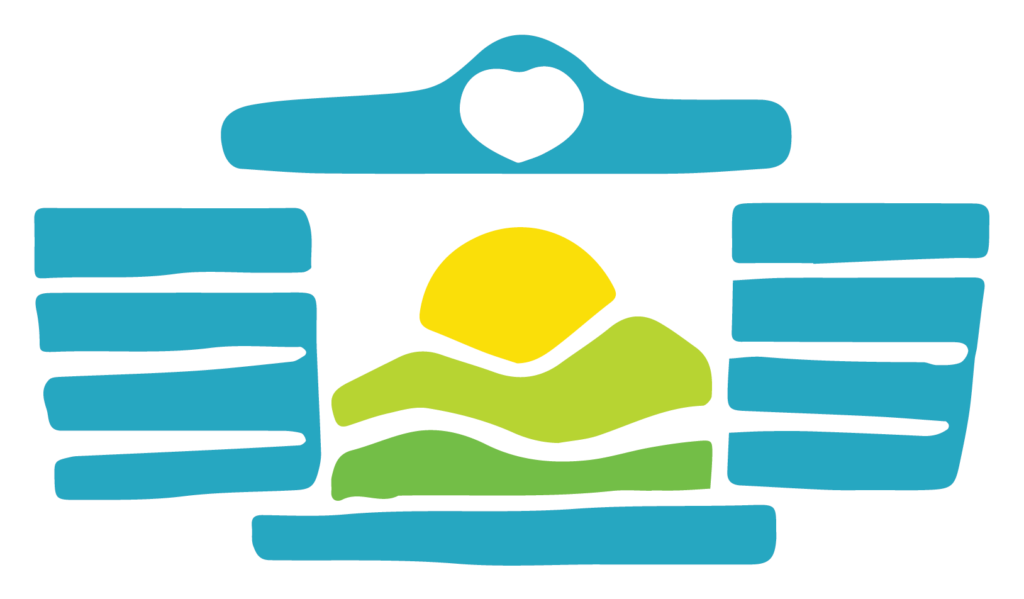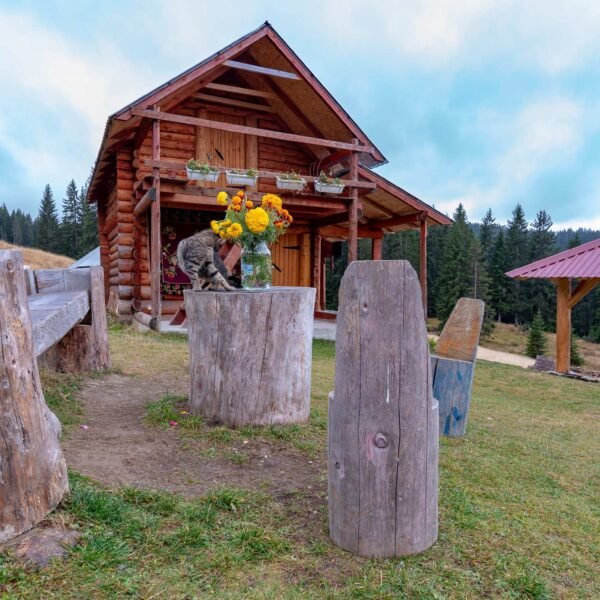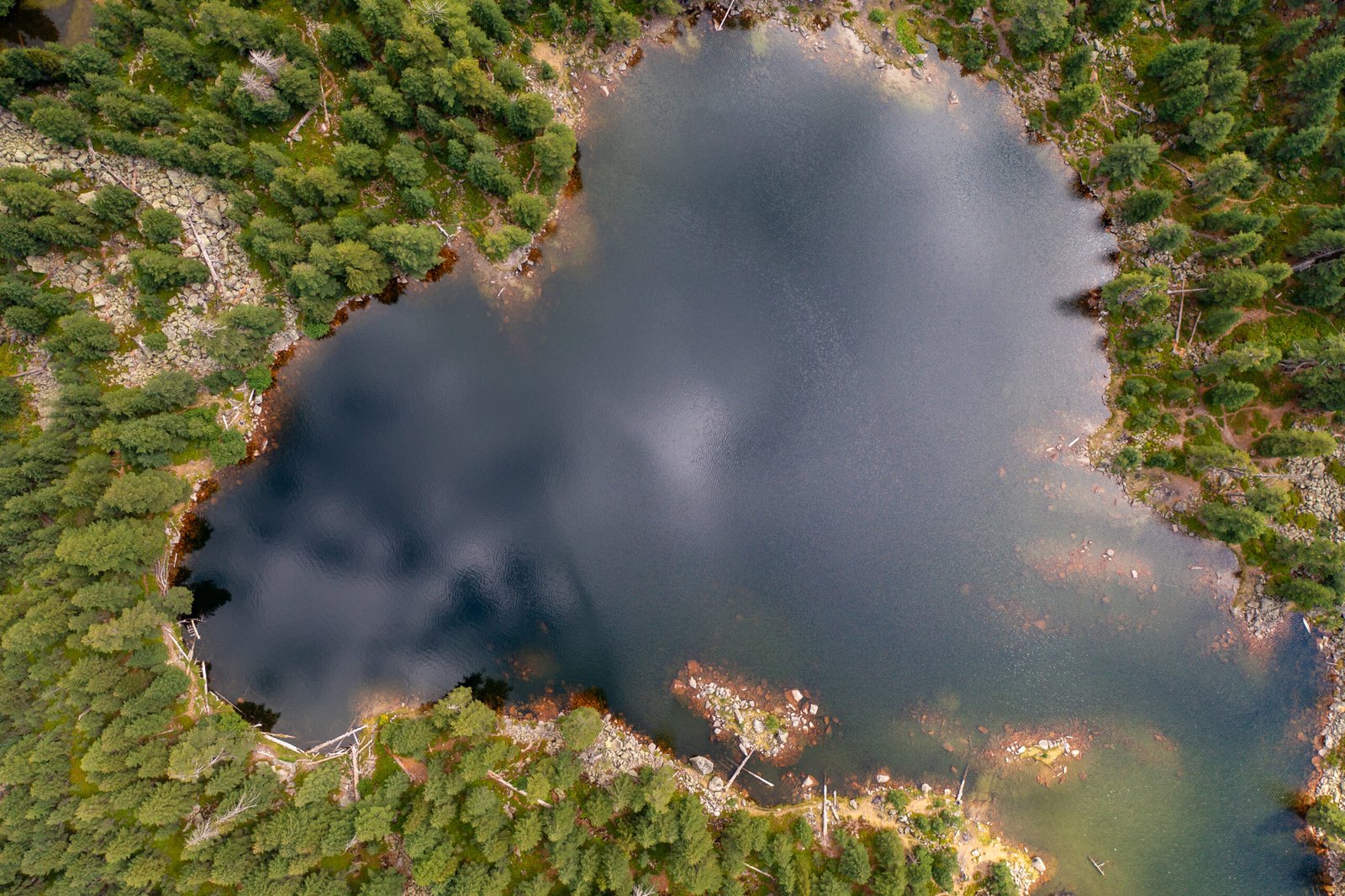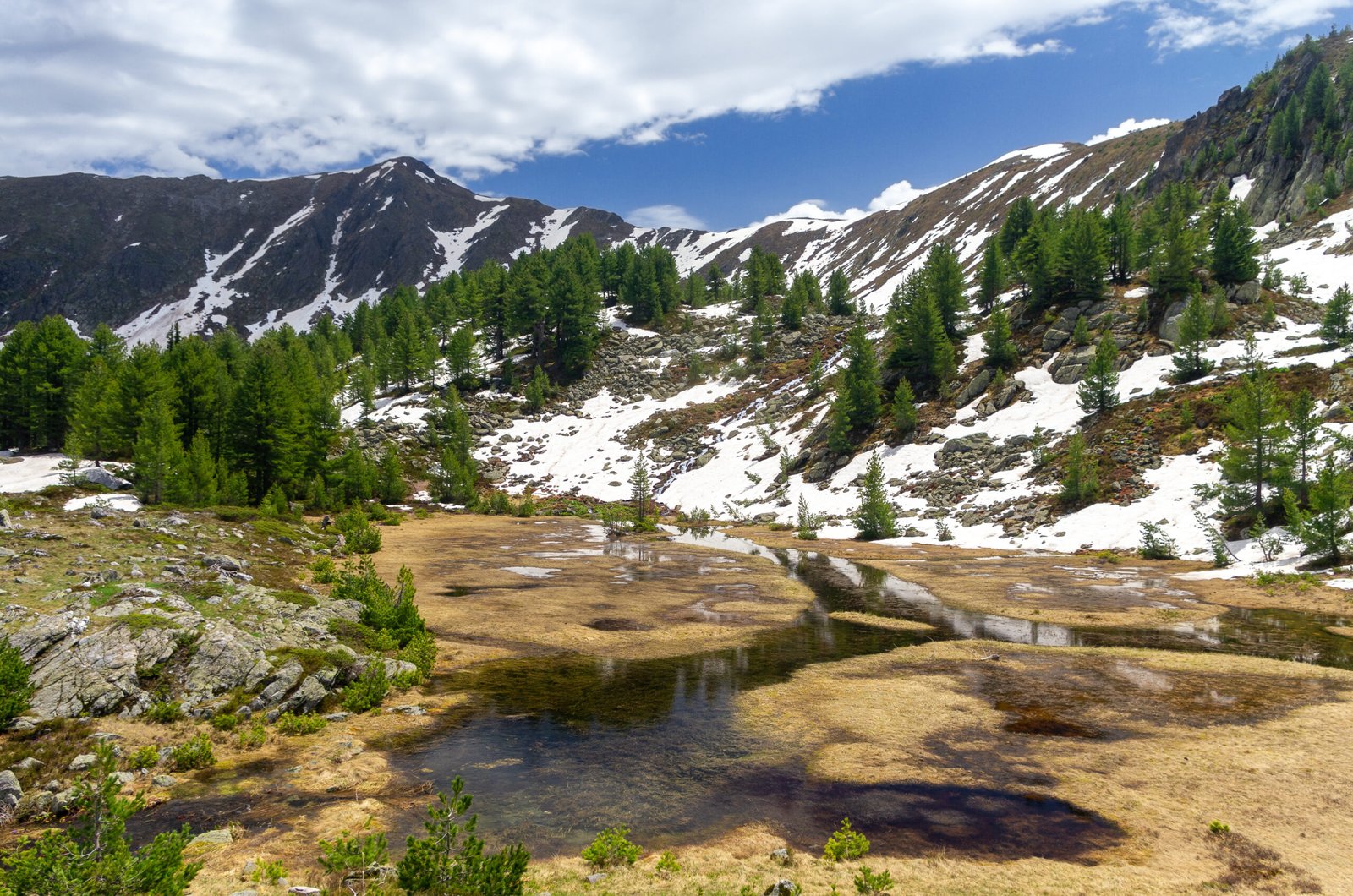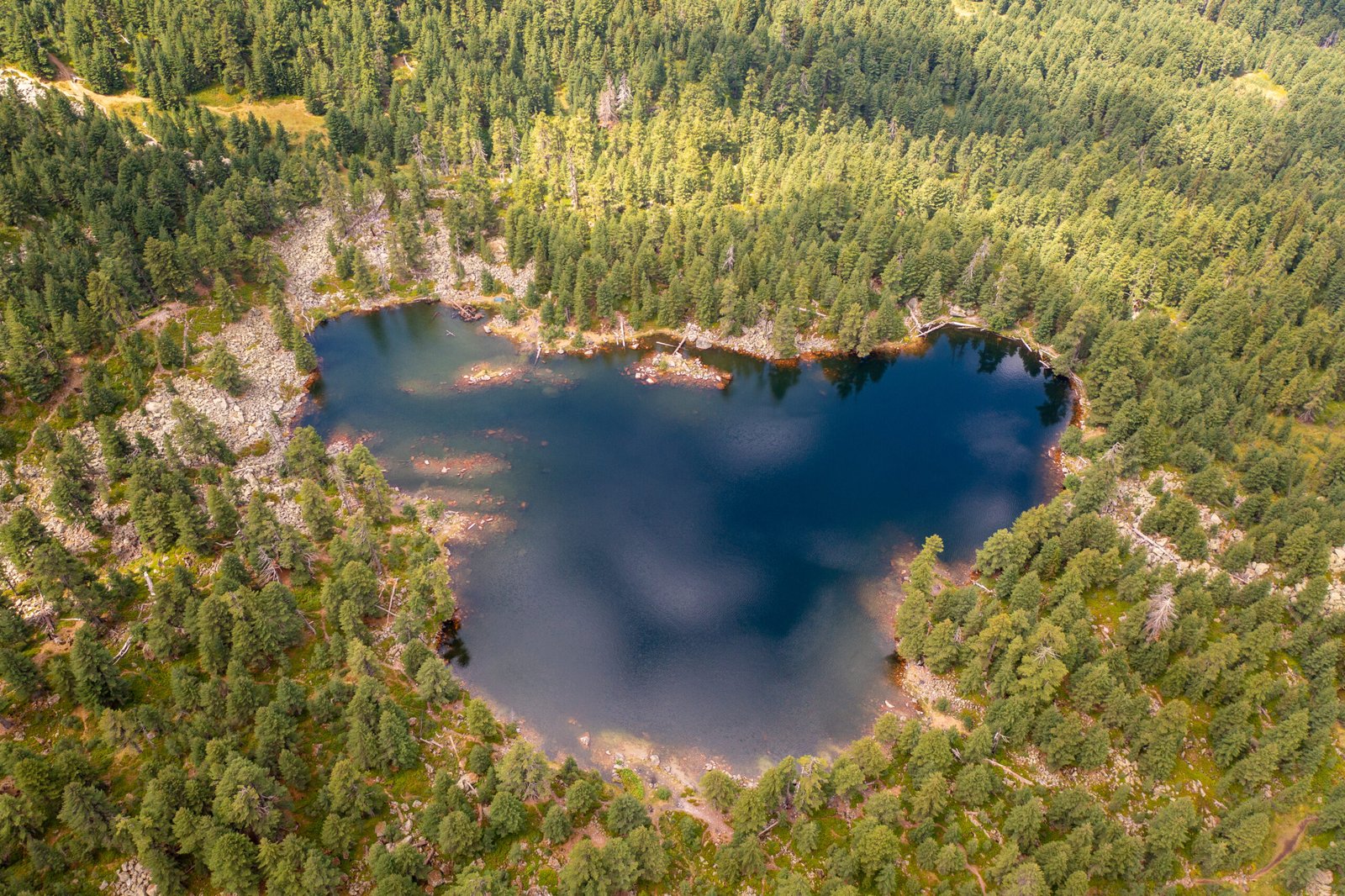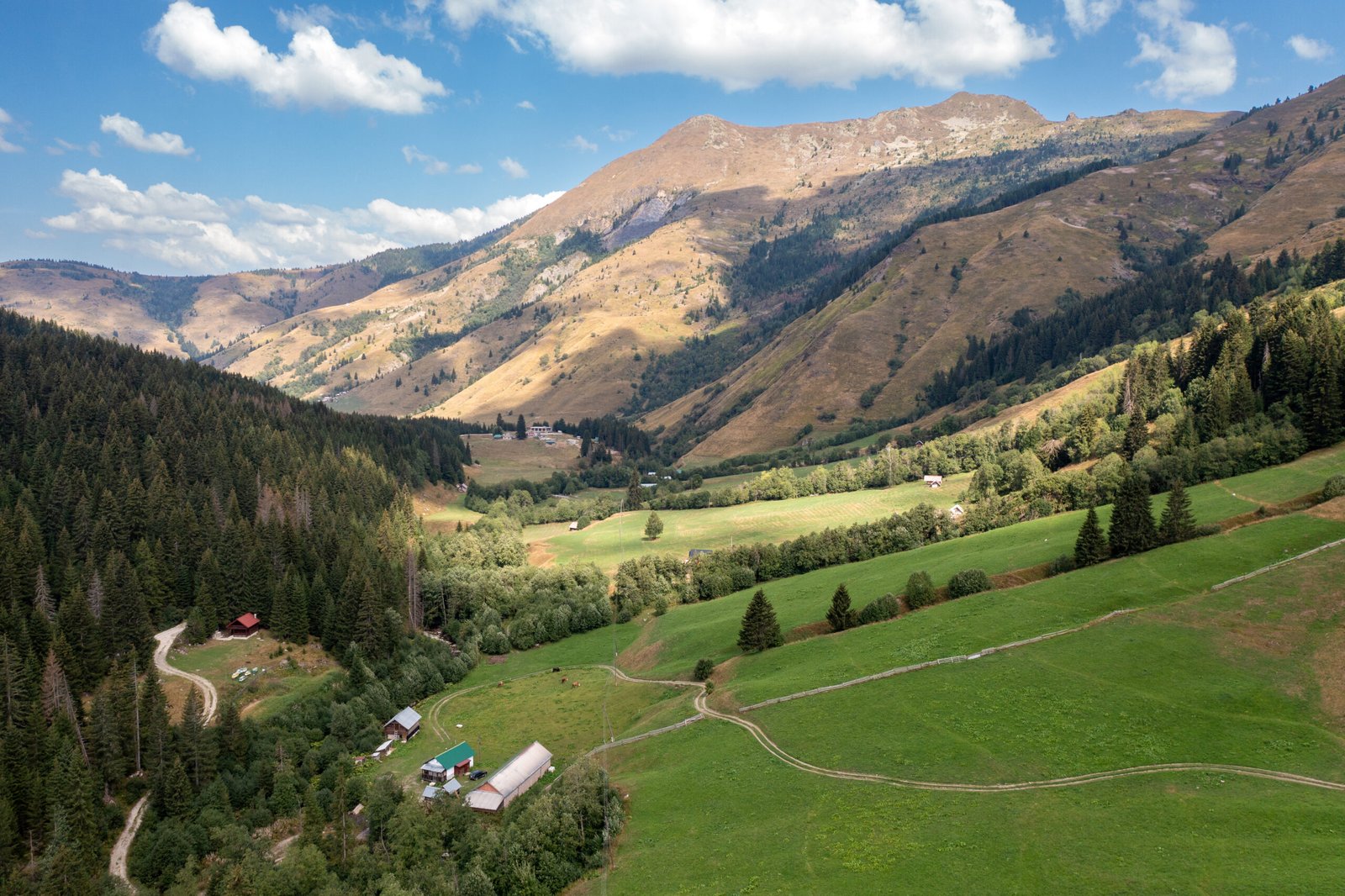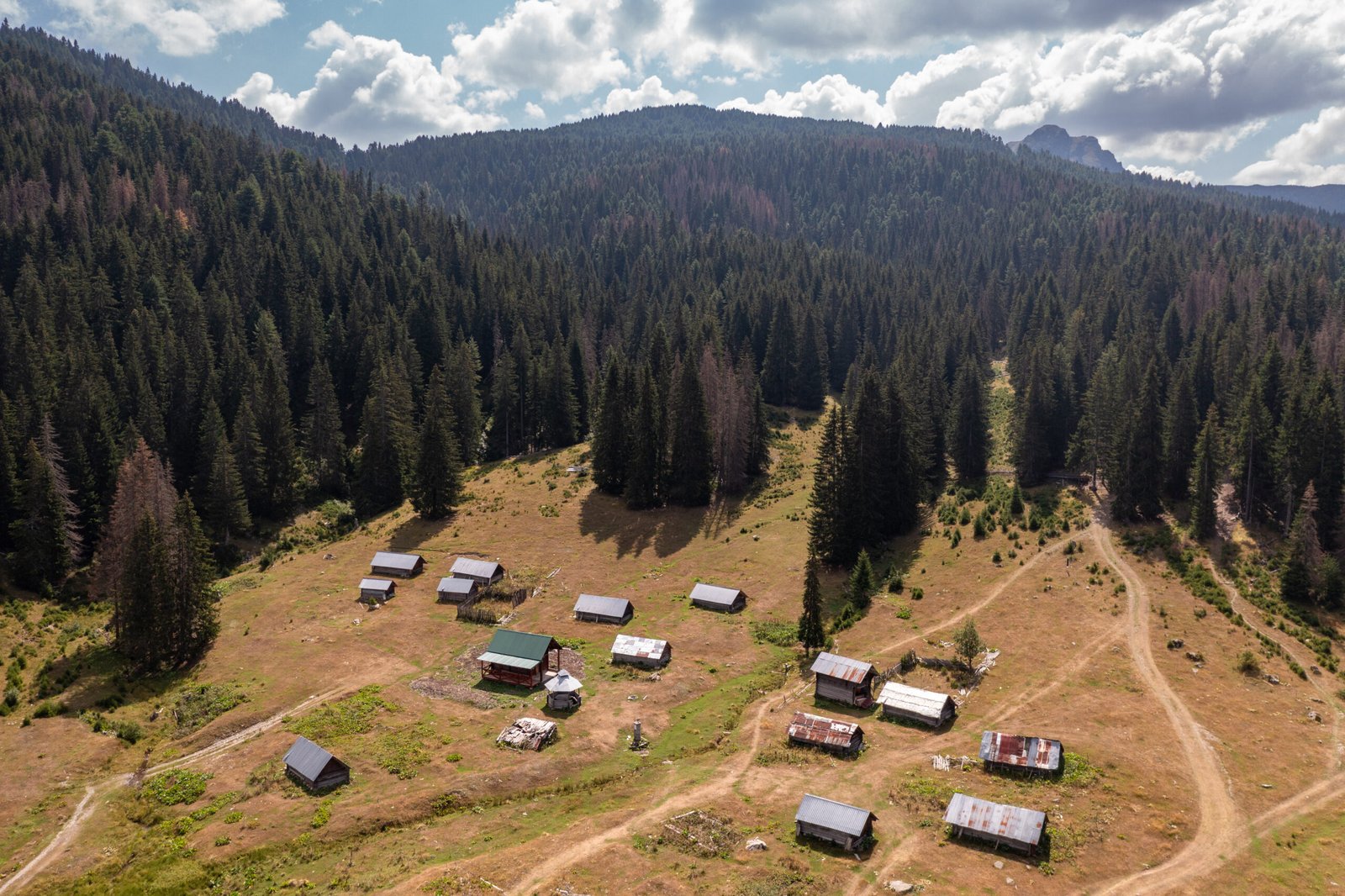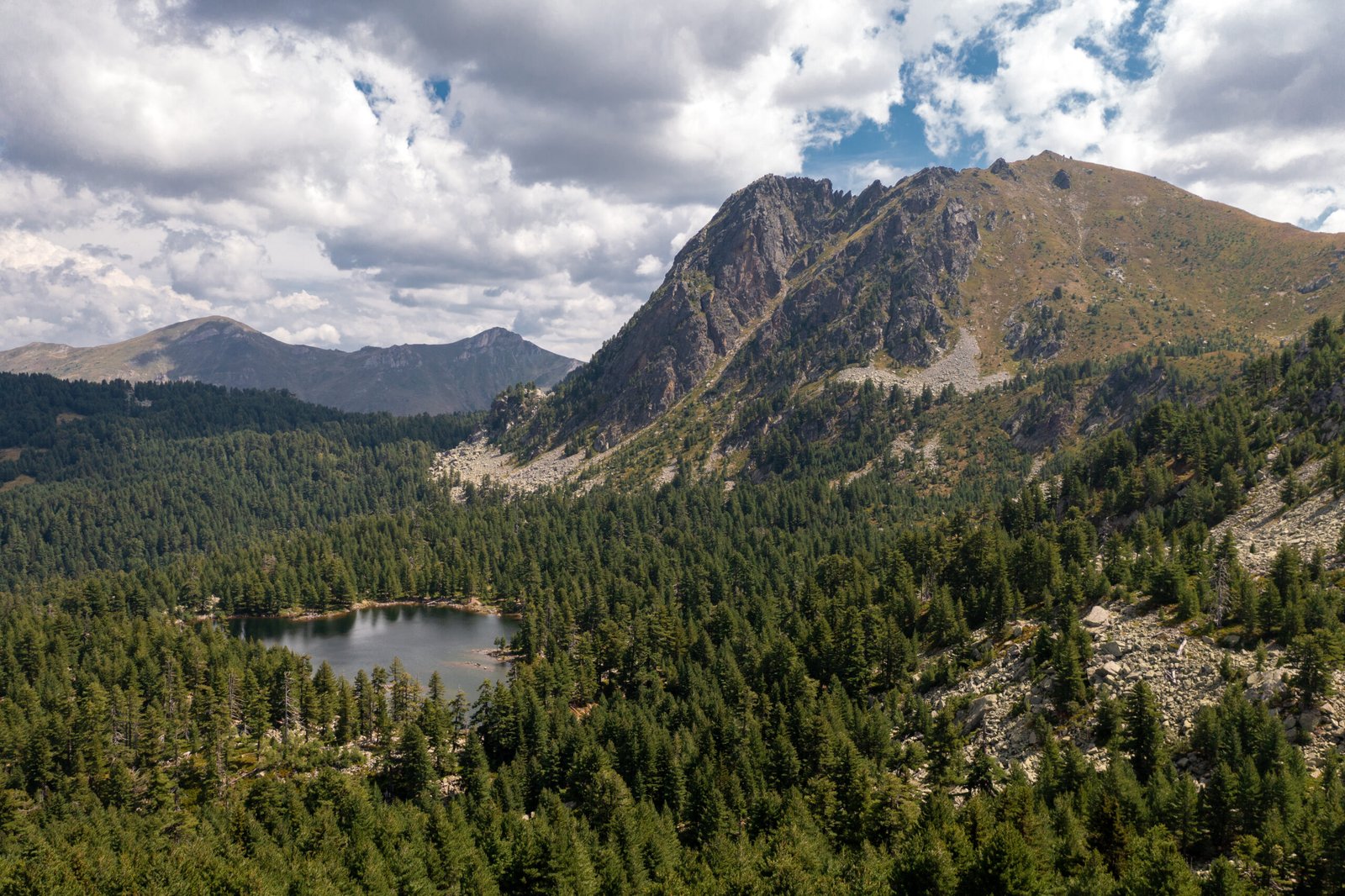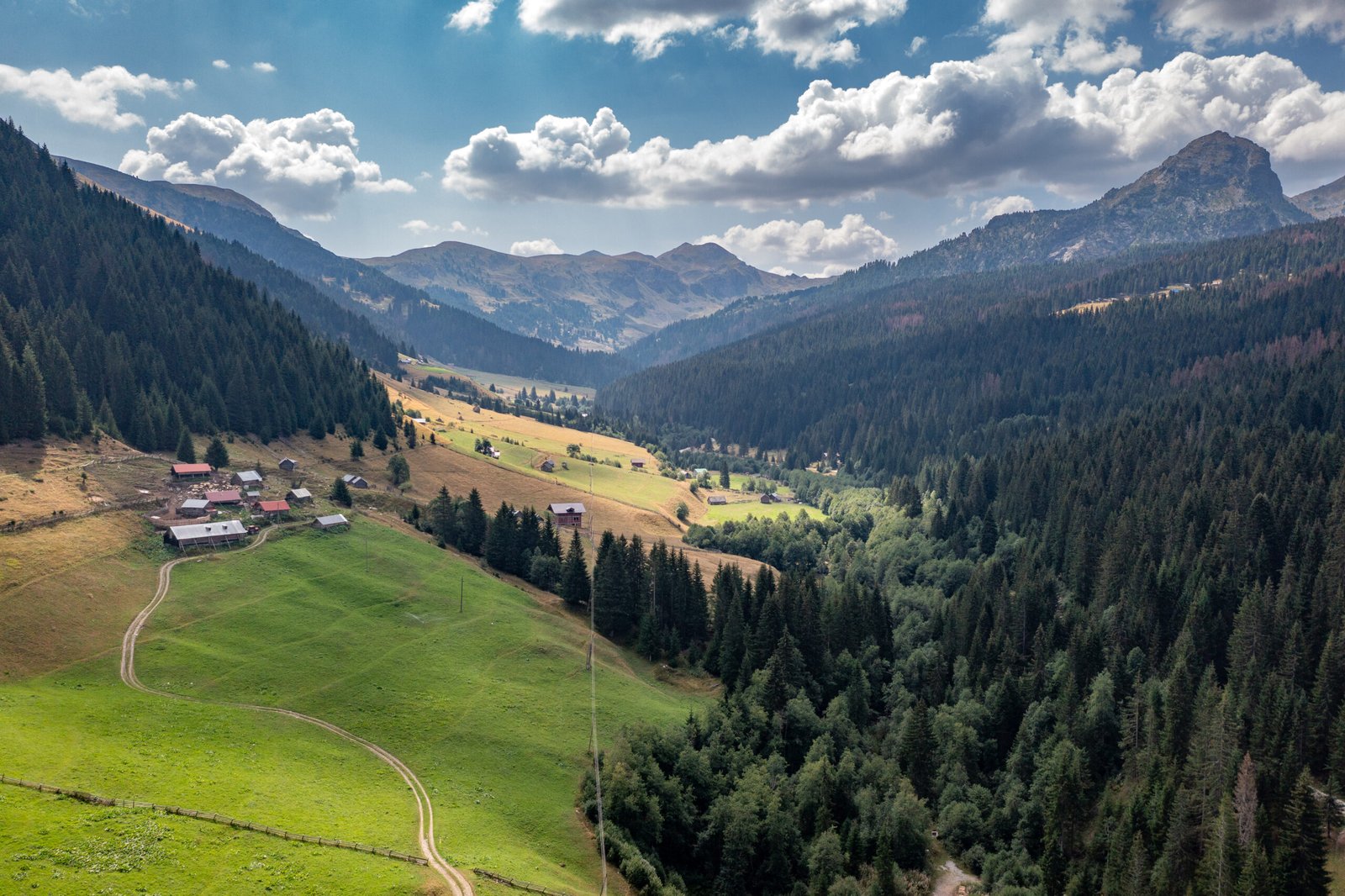Welcome to Babino Polje, a lavish haven of traditional hospitality, kind people, and local products that make it unique. Nestled in the central zone of Montenegro’s Prokletije, near the border with Albania and the Metohija mountain rim, Babino Polje – Bogićevica enchants with stunning peaks and the magical Hrid Lake. Here, alpine-like highland ranges unfold: Starac, Zavoj, and Crni Krš (2,426 m) in the northeast, curving like a horseshoe into Bogićevica’s grand peaks – Pasji Vrh (2,405 m), Maja Made (2,372 m), and Tromeđa (2,366 m) in the south and southeast. In the central and western parts, amid a realm of coniferous forests, rises the Krš Bogićevica massif (2,374 m), with the vivid Hrid Lake nestled in a vast glacial cirque on its slopes at 1,970 m altitude.
THE LEGEND OF BABINO POLJE AND THE SEVEN KIDS
A tale says that in spring, a grandma and grandpa set off with goats to Čakor – he ahead, she behind the herd. A storm struck: fierce north winds and snow. Worn out by the Icy Wind, the grandma sat in the snow and stayed. The grandpa fought the blizzard, barely moving forward, but fatigue won. He looked back to see only whiteness and seven kids bleating – no grandma or herd. Sitting on a stone to wait, he fell asleep forever. Where she stayed became Babino Polje; where he stopped rose Starac Mountain. They say the seven kids still roam here.
SKILLED HANDS OF MOUNTAIN WOMEN
Each spring, as Prokletije’s meadows bloom with color, families from Plav drive their livestock to katuns, staying until the first snows. The young tend sheep by day, while mountain women start mornings with milking and cheesemaking. They then care for the family, gathering at night by the hearth. Samelova Koliba is just one of many katuns here – expect warm, open-hearted hospitality from folk living simply, in harmony with nature.
HISTORY OF KATUNS
Katuns appear in records from the 12th century, though archaeology shows herders roamed these peaks far earlier. Wealth was measured in herds, and highland grazing solved the lack of lowland pastures. Once fiercely guarded, katuns sparked tribal clashes over prime grazing land. Montenegrin rulers rewarded loyal tribes with untouched mountain pastures.
KATUN CUISINE
In Montenegro’s villages, food has long been homemade – pure, free of chemicals, from local produce. Seasonal goods are preserved using old recipes for winter. At a katun, you can pick vegetables, milk a cow, or cook with hosts, tasting true tradition.
DISHES OF KATUN CUISINE
On mountains, where meadows are mowed or grain reaped far from home, lunch arrived in a bošča – a woven woolen cloth, precursor to picnic blankets. In katun huts, a sofra – a low wooden table – still serves meals under tree shade. Pies with cheese and greens restore strength, cicvara of curds and flour warms the body, jardum of sheep’s milk lifts the spirit, and akšijaš of wild blueberries delights the palate.
THE LEGEND OF BAJRO
Katuns were usually named after the family surname of their owners. You are now at Bajrović’s Katun, named after Bajro Redžematović, a wealthy nobleman and the owner of vast mountain meadows and land.
Besides being wealthy, Bajro was known for his kindness and honesty. Many farmers and shepherds came to him to buy hay for the winter. This is where the following anecdote comes from.
One year, people gathered at Bajro’s place to buy hay. He asked them to split into two groups – those who had money to pay should stand on one side of the meadow, while those who didn’t should stand on the other. The poor feared they would be left without hay, thinking Bajro would sell to those who could pay first, and only share what was left. But Bajro then asked the “payers” to go elsewhere and buy their hay. When they left, Bajro gave all his hay to the poor.
There have always been rich men, and there always will be, but only those known for their kindness become legends.
KATUNS
The traditional architecture of the Prokletije mountains is recognizable by katuns – seasonal shepherd settlements. Katuns consist of wooden and stone huts for living, known as stanovi, along with auxiliary structures for keeping livestock.
Wooden huts (stanovi) are built without foundations, using interlocking wooden planks. Nearby, there is usually a fenced garden with vegetables for the family, as well as a pen for milking sheep and cows.
Depending on the construction method, there are several types of katuns. One of the most intriguing is the dubirog, also known as savardak or busara. This type of katun has a circular base, made of woven branches, with a cone-shaped roof covered in straw and a central fireplace. Such katuns once existed in the Plav region, but today they are a rarity, or perhaps even extinct.
PROKLETIJE
Ime ovog planinskog masiva ne nosi prizvuk kletve, već odražava njegovu divljinu, nepristupačne vrhove i misteriozna jezera. Prokletije se prostiru na tromeđi Crne Gore, Kosova i Albanije. Kao najjužniji dio Dinarskog sistema, krase ih vijenci vrhova iznad 2.500 metara, duboke doline i strme litice. Njihova surovost i ljepota inspirisale su austrijskog geologa Amija Buea da ih u XIX vijeku nazove „Alpima juga Evrope“. Među ovim vrhovima uzdižu se Rosni vrh, Dobra i Zla Kolata, Trojan, Šilo, Očnjak, Volušnica, Popadija, Talijanka i Karaula, nadmećući se visinama i pejzažima.
LEGENDA O NASTANKU PROKLETIJA
Prema legendi, Bog je visoko u šumama stvorio Hridsko jezero, kako bi se gorske vile u njemu kupale. Vile su dolazile i učinile jezero ljekovitim, darujući mu moć mladosti, ljepote i sreće. Ljudi su poželjeli jezero samo za sebe i otjerali vile. Bog se razbjesni i munjama razori planine oko jezera, ostavivši samo gole stijene. Tako su, kaže predanje, nastale Prokletije.
VILA I BRAĆA
Na planini je živio bračni par sa tri sina. Svi su postali vrsni lovci. Nakon očeve smrti, krenuše u lov i pored jezera primijetiše vilu kako se kupa naga. Ukradoše joj odjeću, a ona ih molila da joj je vrate. Primorana, pođe s njima. Dogovoriše se da je najstariji brat oženi. No, srednji brat ga ubije da bi vila bila njegova. Nedugo zatim, najmlađi brat ubije srednjeg iz iste želje. Primakavši se kući, obuze ga kajanje – kako da se vrati majci bez braće? U očaju, oduze sebi život. Vila tada pokupi haljine i vrati se svojim drugaricama.
Majka ih je tri dana čekala, a zatim krenula u potragu. Pronašla ih je mrtve i gorko naricala. Od njenih jauka i kletvi odjekivala su brda i doline. Vila joj priđe i ispriča istinu. Majka zavapi: „Pro-kle-ti-jo!“, i izdahnu. Po njoj, ljudi ovu planinu nazvaše Prokletije.
KOLOVRAT
Ancient beliefs about mystical beings in nature have been passed down through generations, and the secrets of Montenegro’s mystical landscapes still live in the stories of the elders. Among these tales, one of the most enigmatic is linked to Hridsko Lake, a hidden gem in the heights of the Prokletije mountains. Its surreal beauty and crystal-clear waters have always stirred the imagination, inspiring legends filled with magic and caution.
It is said that lake fairies, known as jezerkinje, reside in Hridsko Lake—mysterious beings from a world of dreams and enchantment. According to folklore, the nighttime silence of the lake conceals their voices and songs, and anyone who dares to approach the water in the late hours may feel an inexplicable chill or even see flickering shadows dancing under the moonlight. People believe that the fairies created a whirlpool, called the kolovrat, in the northeastern part of the lake—a vortex that mysteriously pulls in anyone brave enough to swim there. Elders claim that some reckless swimmers have disappeared without a trace, and soon after, the water would become calm again, as if keeping its secrets hidden in its depths.
HRIDSKO LAKE
Legend has it that God created Hridsko Lake deep within the dense forest, far from human sight, so that mountain fairies could bathe in its waters. He delighted in their beauty and joy, and in return, they blessed the lake with healing properties, granting youth, beauty, and health. However, when people discovered this place, they wanted the lake for themselves. In their greed, they chased away the fairies, disturbing the balance of nature. Enraged, God unleashed lightning and thunder, destroying everything nearby. From that moment on, the mountains surrounding the lake were cursed, and the lake eternally echoes the past.
THE LAKE OF HAPPINESS
Despite the reverence Hridsko Lake commands, people also call it the Lake of Happiness. It is believed that those who bathe in its waters gain inner peace, good health, and longevity. There is also a tradition of tossing a coin or a piece of jewelry into the water while making a silent wish, as the lake is said to grant the heart’s deepest desires.
Its waters are still considered sacred and healing. Many visitors, following the advice of the elders, wash their faces with the lake’s water, believing it will grant them beauty and protection from illness. Those who carry sorrow in their hearts come here hoping to find solace, while lovers believe that their love, like the secrets of Hridsko Lake, will last forever.
Prokletije is rich in diverse fauna, with many species protected by law. This mountain range is home to about 60 endemic insect species and 130 species of butterflies. In the wider area of Prokletije, there are 40 species of amphibians and reptiles, nine of which are endemic. The slopes of Bogićevica are home to the alpine salamander (Salamandra atra), an endemic species of tailed amphibian that can survive at altitudes up to 2,500 meters. This species is protected at both national and international levels.
The host of Hridsko Lake, the Prokletije lizard (Dinarolacerta montenegrina), is a rare reptile species that survived the Ice Age and exists only in Prokletije. It was discovered 110 years after the Mosor lizard. Initially believed to be a subspecies of the Mosor lizard, in 2007, it was confirmed to be a distinct species. During winter, it hides under rocks, and in spring, it returns to the lake to reproduce and hunt small insects. In Prokletije, 161 bird species have been recorded. Their habitats include mountain regions, forest ecosystems, lakes, and rivers. Among the most notable are the golden eagle (Aquila chrysaetos), the capercaillie, and the rock partridge.
In this area, the brown bear (Ursus arctos), wolf (Canis lupus), fox (Vulpes vulpes), chamois (Rupicapra rupicapra), wild boar (Sus scrofa), and hare (Lepus europaeus) are common. Among small mammals, notable species include the forest shrew, alpine shrew, water shrew, and blind mole, all of which are protected. The Prokletije National Park is home to more than 1,600 plant species, making up half of Montenegro’s flora and one-fifth of the total Balkan flora. The high-mountain environment of Prokletije is rich in local endemics, with 180 endemic species recorded.
The Hridsko Lake ecosystem is exceptionally rich in algae, with 245 species recorded, 78 of which were identified for the first time in Montenegro. The trail to the lake passes through a forest of Bosnian pine, an endemic species of the Balkan Peninsula. The Bosnian pine thrives in harsh climatic conditions, with cracked bark resembling armor. It can reach a height of 30 meters and a trunk diameter of one meter. The Macedonian pine grows at elevations from 1,000 to over 2,000 meters, while the Bosnian pine is found at 1,700 to 2,000 meters. These forests have characteristics of primeval forests and represent a rare botanical phenomenon in the Balkans.
The trail to Hridsko Lake winds through dense blueberry fields. In late summer, visitors can enjoy delicious and healthy wild blueberries, which cover vast forested areas. Due to the abundance of this fruit, Plav is known for hosting the Blueberry Days festival. In addition to blueberries, this region is rich in wild raspberries, blackberries, mountain currants, and wild apples.
*Listed are rural households that are members of our association and are featured on this site. For other accommodation providers in this area, check Google Maps or Booking.com.
PHOTOGRAPHY
Villages Included in the Project
Project
The Regional Development Agency for Bjelasica, Komovi, and Prokletije (RRA BKP), in collaboration with its partners—the Municipality of Peć (Kosovo) and the Regional Development Agency WEST (Kosovo)—implemented the project “Turning Our Villages into Tourist Destinations” under the IPA II Cross-Border Cooperation Program Montenegro – Kosovo 2014–2020.
Through this project, selected villages in the regions of Plav, Andrijevica, Berane, Bijelo Polje, Mojkovac, and Bar saw improvements in tourist infrastructure. The initiative established thematic rural trails linking natural and cultural attractions, installed signage, information boards, and markers for villages and locations, and supported certain rural households in enhancing their conditions for offering tourism services. As a result of the project, a joint promotional brochure was created, incorporating new thematic rural routes and local offerings, along with promotional video material.
Additional information about the village
TOURIST ORGANISATION PLAV
+382 51 250 151
toplav@t-com.me
NATIONAL PARK PROKLETIJE
+382 51 250 130
npprokletije@nparkovi.me
